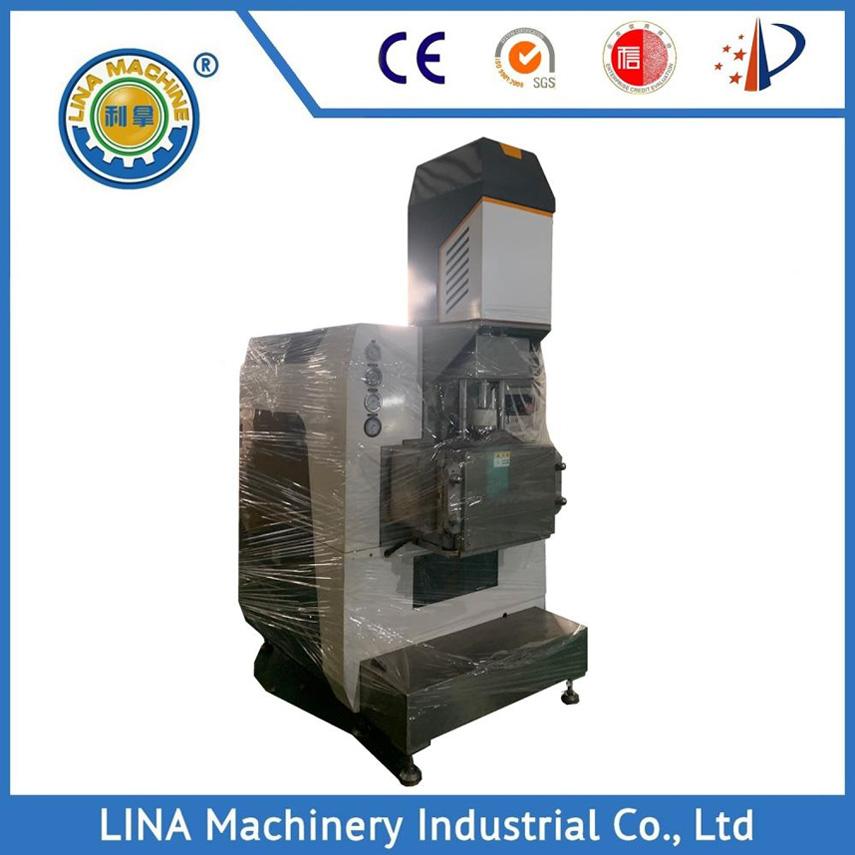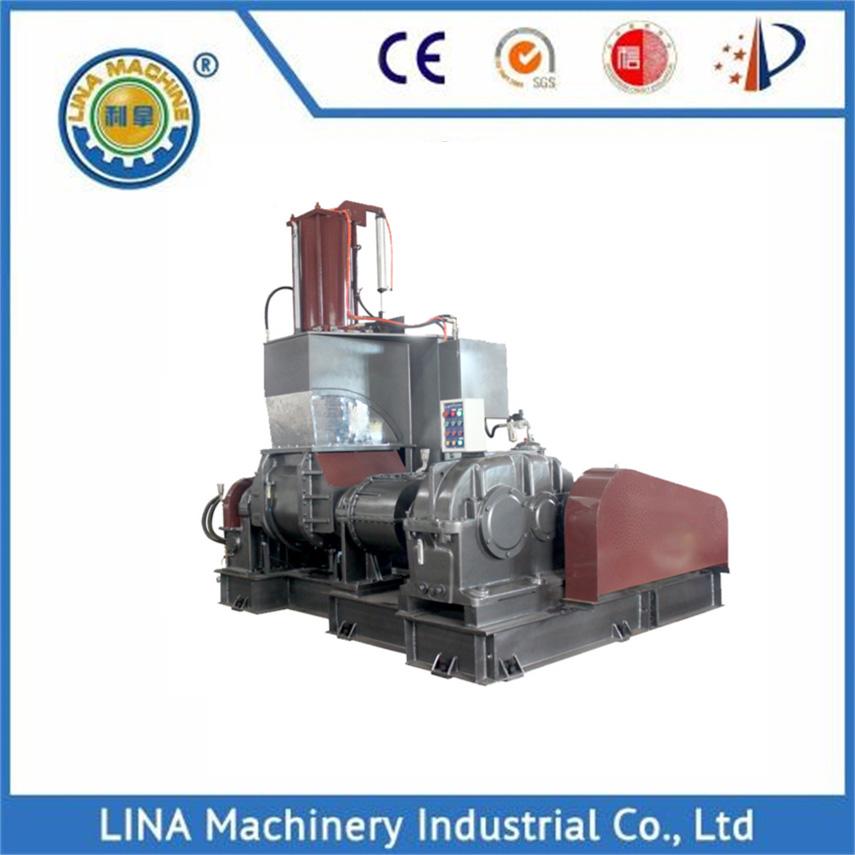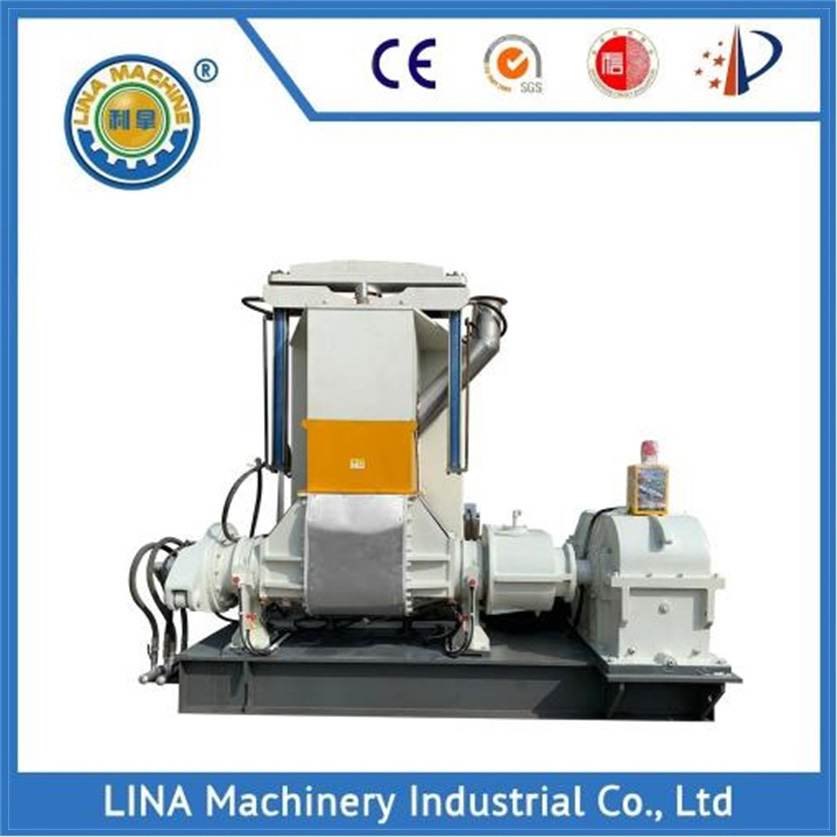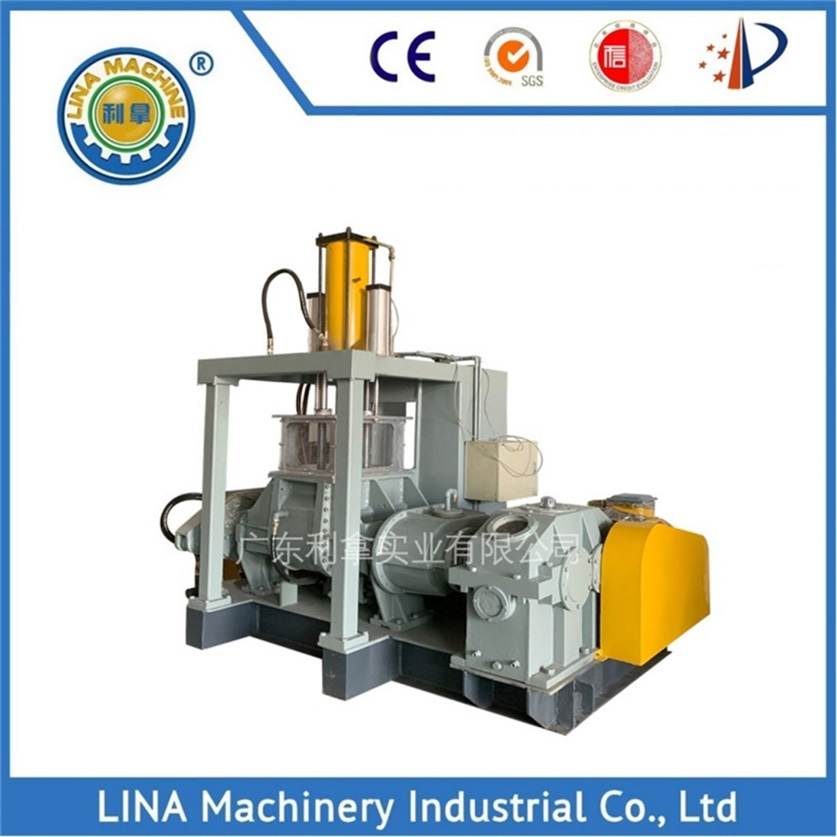




Working Principles:
Rubber sheet extruder operate on the principle of forcing raw rubber material through a die to form a continuous sheet. The process begins with the feeding of raw rubber material, typically in the form of pellets or granules, into the extruder's hopper. Inside the extruder, the rubber material is softened and heated through a combination of mechanical shearing, friction, and heating elements.
As the rubber material moves through the extruder barrel, it undergoes mixing and homogenization to ensure uniform properties and eliminate any air bubbles or inconsistencies. The extruder barrel is equipped with temperature control systems to maintain optimal processing conditions for different types of rubber compounds.
At the end of the Rubber Sheet Extruder barrel, the rubber material is forced through a specially designed die, which determines the shape and dimensions of the final rubber sheet. The extruded sheet is then cooled and solidified on a conveyor belt or cooling rollers before being wound into rolls for further processing or distribution.

Components:
Hopper: The hopper is where the raw rubber material is initially fed into the extruder. It often features a screw or auger mechanism to convey the material into the extruder barrel.
Extruder Barrel: The Rubber Sheet Extruder barrel is a cylindrical chamber where the rubber material is processed. It typically contains a rotating screw or screws that convey the material forward while subjecting it to heating and mixing.
Die Assembly: The die assembly is located at the end of the extruder barrel and shapes the extruded rubber into a flat sheet. Dies can be customized to produce sheets of various thicknesses and widths.
Heating Elements: Heating elements are used to raise the temperature of the rubber material inside the extruder barrel to facilitate processing and ensure proper flow characteristics.
Cooling System: After exiting the die, the extruded rubber sheet is cooled rapidly to solidify it into its final form. Cooling systems may involve air or water cooling methods.
Conveyor System: A conveyor belt or set of rollers transports the extruded rubber sheet away from the extruder for further processing or packaging.
Applications:
Automotive: Rubber sheets are used in gaskets, seals, hoses, and vibration dampening components in vehicles.
Construction: They serve as waterproof membranes, flooring materials, and insulation in buildings and infrastructure.
Aerospace: Rubber sheets are employed in aircraft seals, gaskets, and vibration isolation systems.
Manufacturing: They are utilized for conveyor belts, packaging materials, and industrial seals in manufacturing processes.





Rubber Sheet Extruder LN-RS-90
Rubber Sheet Extruder production lines,for producing the rubber to sheet by single screw extruder.It also could stick paper film,aliminum film and stainless steel belt on the surface of sheet.The prod
TAG: Rubber Sheet Extruder,Extruder Rubber Machine,Rubber Extrusion Equipment,Extruder Machine For Rubber
Description
Rubber sheet extruder are integral machines in the rubber processing industry, designed to produce uniform sheets of rubber with precise thickness and dimensions. These extruders play a crucial role in various sectors, including automotive, construction, aerospace, and manufacturing. Working Principles:
Rubber sheet extruder operate on the principle of forcing raw rubber material through a die to form a continuous sheet. The process begins with the feeding of raw rubber material, typically in the form of pellets or granules, into the extruder's hopper. Inside the extruder, the rubber material is softened and heated through a combination of mechanical shearing, friction, and heating elements.
As the rubber material moves through the extruder barrel, it undergoes mixing and homogenization to ensure uniform properties and eliminate any air bubbles or inconsistencies. The extruder barrel is equipped with temperature control systems to maintain optimal processing conditions for different types of rubber compounds.
At the end of the Rubber Sheet Extruder barrel, the rubber material is forced through a specially designed die, which determines the shape and dimensions of the final rubber sheet. The extruded sheet is then cooled and solidified on a conveyor belt or cooling rollers before being wound into rolls for further processing or distribution.

Components:
Hopper: The hopper is where the raw rubber material is initially fed into the extruder. It often features a screw or auger mechanism to convey the material into the extruder barrel.
Extruder Barrel: The Rubber Sheet Extruder barrel is a cylindrical chamber where the rubber material is processed. It typically contains a rotating screw or screws that convey the material forward while subjecting it to heating and mixing.
Die Assembly: The die assembly is located at the end of the extruder barrel and shapes the extruded rubber into a flat sheet. Dies can be customized to produce sheets of various thicknesses and widths.
Heating Elements: Heating elements are used to raise the temperature of the rubber material inside the extruder barrel to facilitate processing and ensure proper flow characteristics.
Cooling System: After exiting the die, the extruded rubber sheet is cooled rapidly to solidify it into its final form. Cooling systems may involve air or water cooling methods.
Conveyor System: A conveyor belt or set of rollers transports the extruded rubber sheet away from the extruder for further processing or packaging.
Applications:
Automotive: Rubber sheets are used in gaskets, seals, hoses, and vibration dampening components in vehicles.
Construction: They serve as waterproof membranes, flooring materials, and insulation in buildings and infrastructure.
Aerospace: Rubber sheets are employed in aircraft seals, gaskets, and vibration isolation systems.
Manufacturing: They are utilized for conveyor belts, packaging materials, and industrial seals in manufacturing processes.







